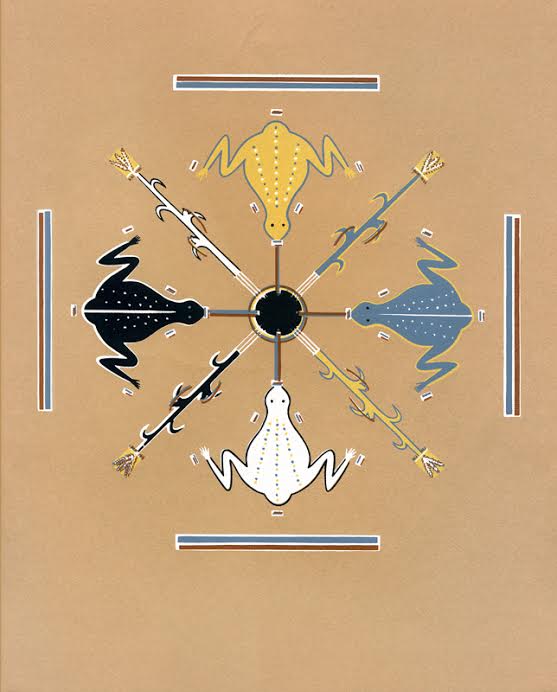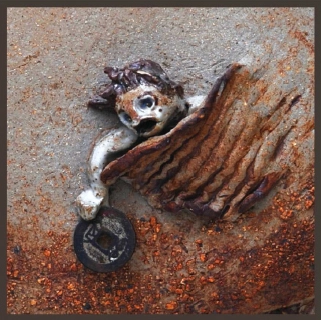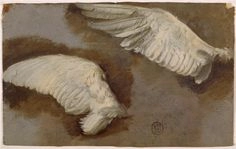ARAS Connections: Image and Archetype - 2015 Issue 4

ARAS has set its vision on growing in two areas simultaneously. We are growing the archive itself with new images, new commentaries and expanded sections from less well developed parts of the archive such as the Meso American and Asian sections. And we are growing our outreach to the world with new programs such as the Pioneer Teen Program and the ARAS/ARTstor project. At any given time, we are developing projects that are more introverted and others that are more extroverted. The newest of our more introverted projects has just come to fruition through the generosity of a grant from the Bay and Paul Foundations. When we put together The Book of Symbols, there were over 300 hundred wonderful images that had been selected for the project that did not make the final cut to be included in the book. This did not mean they were not as good as those that ended up in the book; we just couldn’t include everything we wanted to. Those images which were not included have now just been been published as part of the archive. Subscribers to the archive can access all the new images by typing “Bay and Paul Preservation Project" into the search box and clicking on Search Image Archive.
Adding these images sounds like a straightforward project but when you think about all the pieces that go into creating such a collection, you can get a good idea of the kind of work it takes to curate the ARAS archive which stands out as a unique selection of symbolic imagery and commentary. Grant writing, image selection, categorizing and filing electronically, writing commentaries, placing the images on the website—all are fine skills that our ARAS staff routinely exercise. The following staff members deserve our deep gratitude for their incredible skill, creativity, curiosity and dedication: Karen Arm, Anne Thulin, Allison Tuzo, Kako Ueda and our Executive Director, Ami Ronnberg.
Our work at ARAS continues to be exciting and challenging. We are developing wonderful new ventures, especially in Taiwan and China. As we move into 2016, we have ambitious goals for the future. To realize those goals, we need help in the form of contributions from all those who believe in ARAS’ mission to bring a psycho-spiritual intelligence to the exploration of symbolic imagery cross-culturally. Click here to give what you can.
The Language of the Fishes

If one day someone should ask you to tell them about alchemy—you might suggest they immerse themselves in Frances Lichtveld’s The Language of the Fishes. For in so doing, they and you will see and feel the mystery of matter and psyche.
Several years ago a friend and colleague asked if I could help Frances Lichtveld find a publisher for something she had written. A few weeks later her extraordinary work arrived in the mail. It was a gift in every sense. Isn’t that what friends give us? I am quite certain that you will find ARAS Connections is now giving you an exquisite gift.
Somewhere Rumi wrote that beyond the world of water and clay one sees both image and Image-Maker.
- Mary Wells Barron
Introduction:
"The point can be reached where one can interrogate a heart by asking it to confess its enthusiasms inspired by the grandeur of the contemplated world..." - Gaston Bachelard
While a number of ideas about the influence of my ceramic career on my life have been present for over twenty years, I first began to write down the technical aspects of my art. Writing does not come easily to me, at least not the kind of writing one would care to share with others. Having kept diaries and dream journals for a very long time it was easy to read and get reacquainted with them. To approach and become re-engaged with my solitary self, very present in the studio, proved a lot more complex because my diaries do not hint of that particular place within, although various dreams do. When I worked with clay I organised my studio to work on my own. Now I unravel that I was, unconsciously, gathering other kinds of information; this became clear in later dreams and contemplations on my life as a potter. My writing is about the necessary return to my studio, in spirit, in search of that unconsciously absorbed and imbedded input. Memories have their particular audacities, it took a lot of courage for me to follow them. The loss of the use of my right arm had put an end to my ceramic career. While outwardly I still kept on living in a meaningful way, I felt lost and wounded, that form of contemplative solitude I experienced in the studio was hard for me to find elsewhere. In the back of my mind there had been a second question: the correlation I felt existed between the way I fired my high-fired reduction ceramics and individuation; would I be able to explain that? My interest lies in what actually occurs inside the kiln during the 10 hour process, not only in the final product. High-fired reduction stoneware with its clear presence and the use of the four elements, earth-water-fire-air, shows a simpler approach than alchemical texts. It is practical and demonstrates directly the results of the mixing of the four elements.
Read The Language of the Fishes in its entirety.
Martha's Mandala

Martha Oliver-Smith presented the following piece based on her book Martha's Mandala at the 2015 Friends of ARAS Event in New York this fall. A review of the book was published in the last issue of ARAS Connections. Enjoy!
I would like to begin by explaining a few things about how Martha’s Mandala came to be a book. The text seen on this mandala comes from an essay called “Time,” written by my grandmother. Both her words and the image of the mandala itself, whirling on in its endless circle, seem to be telling the story. Her words and the image itself.
It is the story of Martha Stringham Bacon, my grandmother, who was an artist, though she was reluctant to call herself that. She was never formally trained though she took art classes after high school and in her early married life. Her work was highly illustrative and influenced by other illustrators such as N.C. Wyeth, Arthur Rackham and Kai Neilson. She was a fine draftsman with a gorgeous sense of color. Perhaps due to her lack of formal education, she was extremely self-deprecating about her work and for the most part kept it to herself and her family.
I spent much of my childhood living in her house and growing up in her care. Over the years, she told me much of the story, her ideas, dreams and visions. She showed me her paintings and drawings; she also read to me and taught me to read. From there I was launched into the world of fairy tales, mythology, and poetry, onward to reading and studying novels and other literary forms, and thus to a long and rewarding career teaching English to high school and college students. Ultimately, because of my grandmother’s influence, I would eventually find my own rather tortuous way to my own writing.
As a child, I was unaware of how unusual my grandmother’s story was. Much later, when I was in my forties, I came across a letter when I was visiting my Aunt Alice, the youngest Bacon daughter. I found it in a paper box moldering in a damp storage shed in Princeton, New Jersey. Left in that shed for almost thirty years, Aunt Alice had finally allowed me to wade through the sea of archival materials after many years of me gently but persistently trying to persuade her to let me look through the papers and drawings. The letter, floating loose among the old envelopes and scraps of drawings was from Carl Jung.
The Poetry Portal

In this final Poetry Portal for the year we offer you an image of “Wings” as inspiration. It was painted in the early 18th century by the French painter Nicolas Vleughels. Wings evoke flight, angels and birds. Soul and Psyche have wings. Plato declared that “The function of the wing is to take what is heavy and raise it up into the region above where the gods dwell.” With wings we can look at things from both the perspective of heaven and earth at the same time. We hope that this image will inspire you to write a poem in our Ekphrasis tradition. Please send your poems to info@aras.org by February 15, 2016
A heartfelt thank you to everyone who submitted a poem for the last “Invite to Write” inspired by the image of the “Veil,” which you can read here. It is always a delight and deeply moving to read your submissions.
Become a Member of ARAS!
Become a member of ARAS Online and you'll receive free, unlimited use of the entire archive of 17,000 images and 20,000 pages of commentary any time you wish—at home, in your office, or wherever you take your computer.
The entire contents of three magnificent ARAS books: An Encyclopedia of Archetypal Symbolism, The Body and The Book of Symbols are included in the archive. These books cost $330 when purchased on their own.
You can join ARAS Online instantly and search the archive immediately. If you have questions, please call (212) 697-3480 or email info@aras.org
We Value Your Ideas
As our newsletter grows to cover both the ARAS archive and the broad world of art and psyche, we're eager to have your suggestions and thoughts on how to improve it. Please send your comments to info@aras.org. We look forward to your input and will reply to every message.
Subscribe
If you're not already a subscriber and would like to receive subsequent issues of this newsletter by email at no cost, e-mail us at newsletter@aras.org.
